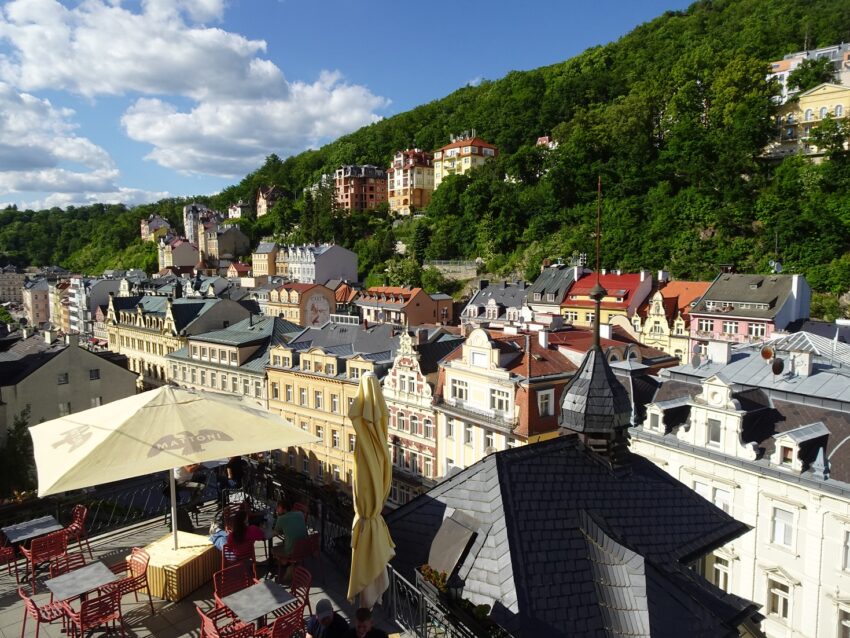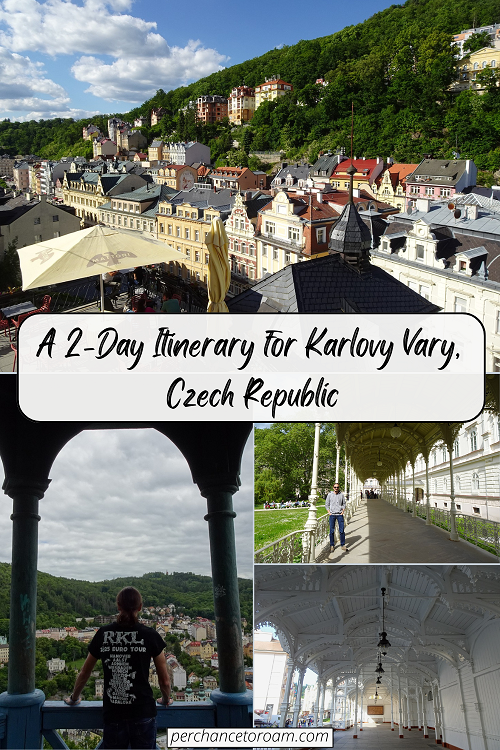Karlovy Vary was one of those places we didn’t expect to like as much we did. I’d always pictured it as a somewhat insipid, stodgy town, mainly visited by bourgeois folks constantly sipping mineral water from oddly shaped porcelain cups.
To be honest, that version of the town definitely exists, but there’s also way more to see and do than we anticipated. The whole place feels like it’s been lifted out of a painting, with its pastel-coloured town houses, Belle‑Époque colonnades, and hilly surroundings.
It might be a bit too much to see in a day, but if you’ve got a weekend, you can get a good mix of history, culture, and weird Czech herbal liqueur. This itinerary gives you a two-day introduction to the town with all the stops we found worth visiting.
This post may contain affiliate links, and I might earn a small commission at no additional cost to you. For more info, click here.
Special Tip: Get a Karlovy Vary Card
First off, a quick recommendation: There’s a Karlovy Vary Region Card, which gives you free access to a lot of the sights in the town and its surroundings (as well as discounts in some cafés and restaurants). We bought the two-day version, and with the amount of places we visited, it had already paid off after the first day.
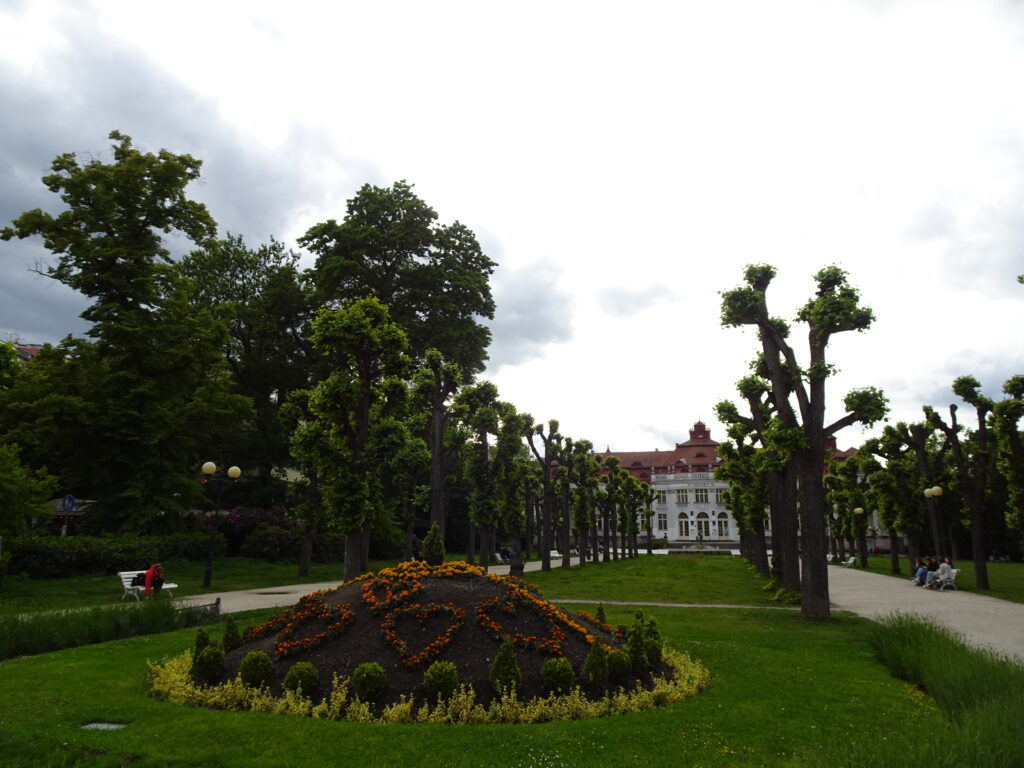
If you want to take it more slowly, there are 4- and 7-day cards available, too. The card can be bought at the tourist information centre in the Imperial Baths or online on this site. This isn’t an affiliate link – I just really think, it’s amazing value. All of the places in this itinerary are either included in the card or free to begin with.
2-Day Karlovy Vary Itinerary
In this itinerary, Day 1 is dedicated to exploring the central spa quarter, with its famous colonnades, historical bath buildings and interesting museums, while Day 2 is spent exploring the surrounding hills and taking tours of the Becherovka liquor factory, as well as the underground of the Hot Spring Colonnade
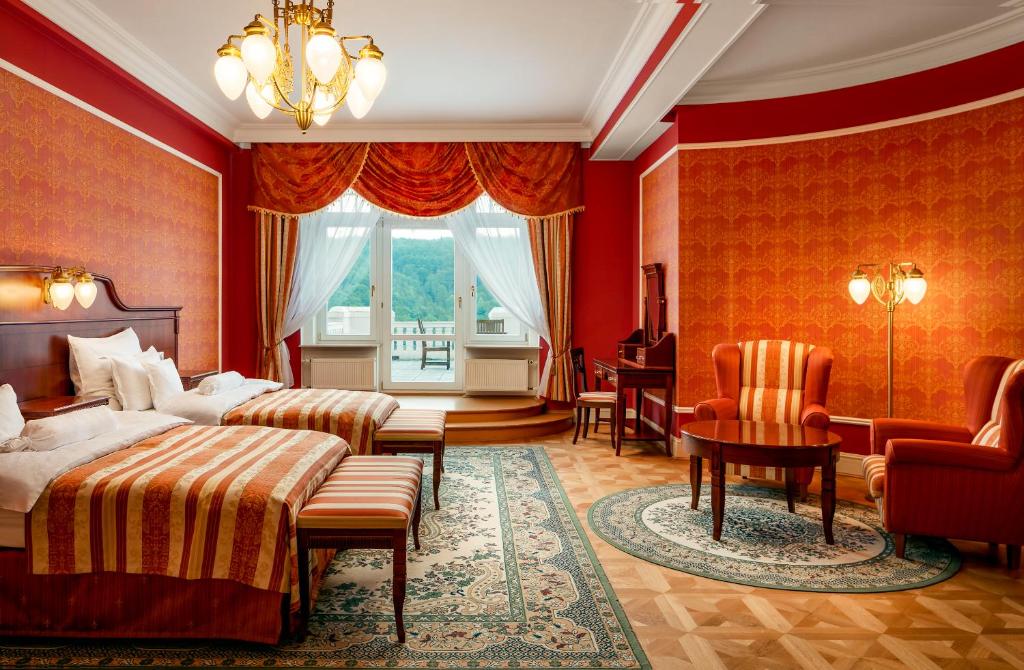
Top 3 Hotels in Karlovy Vary
Budget: Sunshine Pension
Midrange: Salvator Hotel
Luxury: Spa Hotel Imperial (pictured)
.
.
Day 1
The Four Colonnades
Let’s start with the city’s most famous features: Built over the natural mineral springs, these airy covered arcades were designed to shelter spa-goers while they wandered from one spring to the next, sipping the famously “healing” waters.
If you want to try the waters, you should get one of the famous spa cups for the full experience. We just borrowed one for the day from our AirBnB, but they’re also sold in little shops all around the Colonnades. Their special feature is a hollowed-out handle that you can use to slowly sip the sometimes quite hot water.
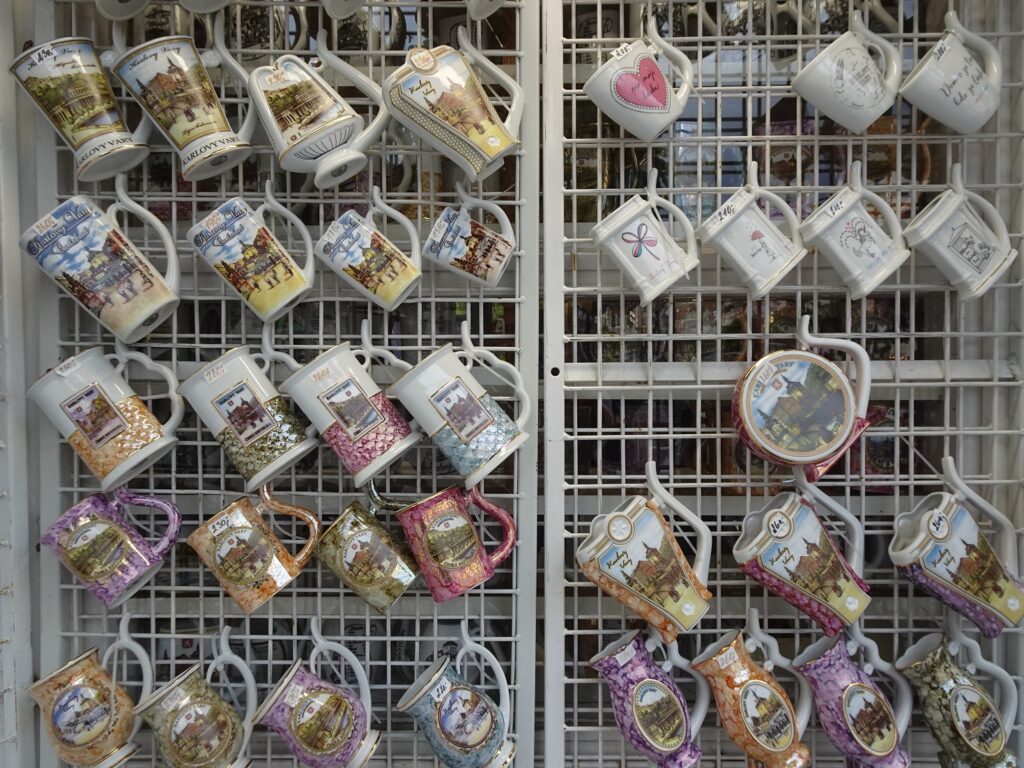
To be honest, the warm, sulphuric mineral water wasn’t really for me, even though we tried quite a few. That said, we still found visiting the colonnades a lot of fun, for their impressive architecture, and enjoyed watching everyone else scrunch up their faces when tasting the water.
All the Colonnades are quite close to each other on the western side of the river and are free to visit.
Park Colonnade (Sadová Kolonáda)
This is the first colonnade you’ll pass if you start your walk from the modern town centre is the Park Colonnade at the edge of the pretty Dvorák Park. It’s the smallest of the four, but in my opinion also the most elegant. With its intricate cast-iron lacework painted a soft white, it kind of looks like something out of a music box.
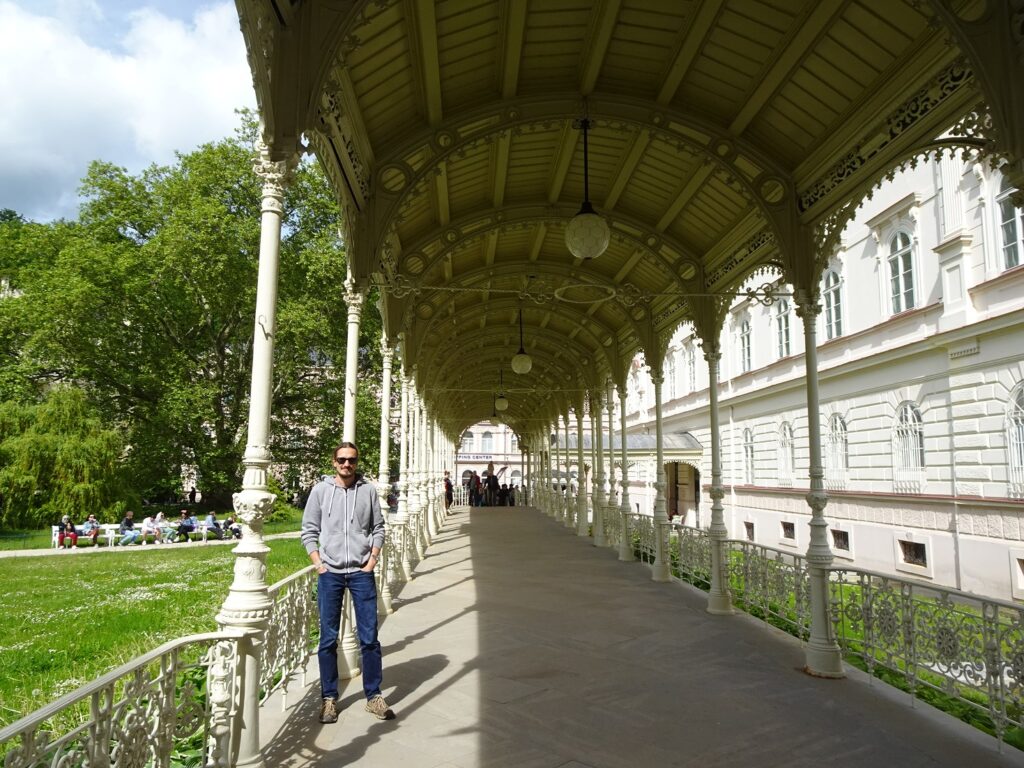
The colonnade used to be part of a larger concert pavilion from the 1880s, and it’s got a slightly nostalgic, faded charm to it. There’s a spring at each end of the colonnade – the more popular one seems to be the Snake Spring at the western end. If you follow the river south from the eastern end, you’ll come to the Mill Collonade.
Mill Colonnade (Mlýnská Kolonáda)
This is the biggest of the four colonnades, and it’s quite a showstopper with its row of 124 Corinthian columns stretching along the river. It was built in the late 19th century and is basically the definition of spa-town grandeur. We felt more like walking through a Roman temple than a Czech health resort.
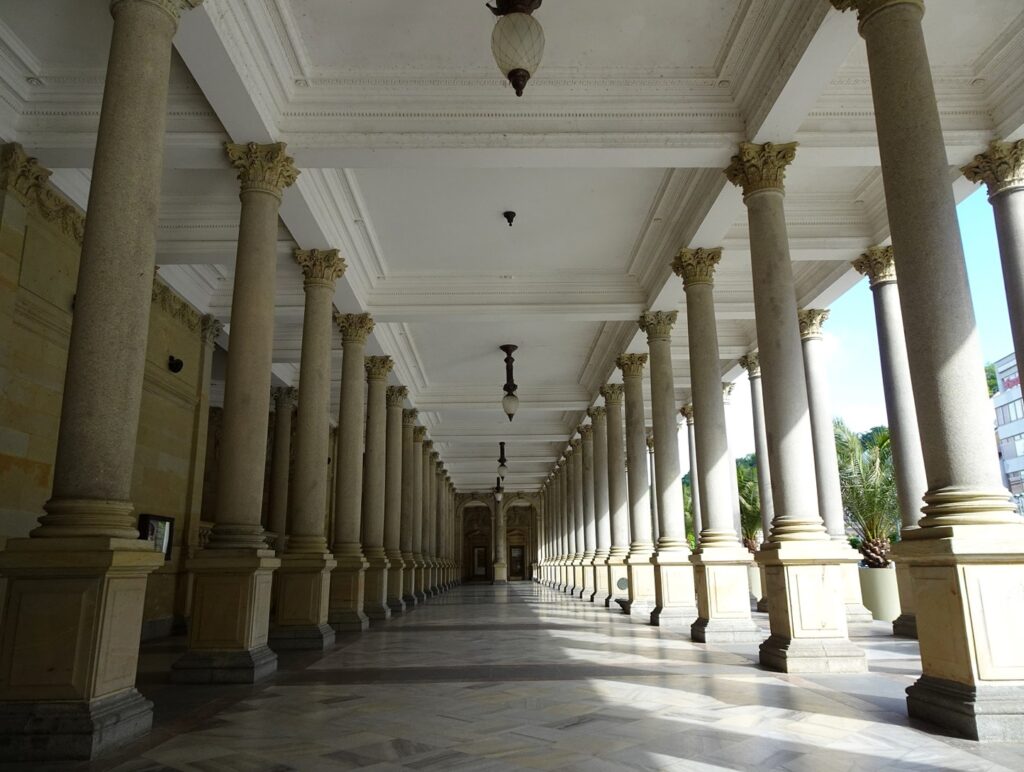
Inside, five hot springs bubble away in little stone basins – including the popular Mill Spring and the Rock Spring. Note that it can get pretty crowded during the day. We came here around 8am, when we had the place to ourselves.
Market Colonnade (Tržní Kolonáda)
A little further south sits the Market Colonnade with its delicate wooden ceiling carved in style resembling a Swiss Chalet – all pointed arches and white painted timber.
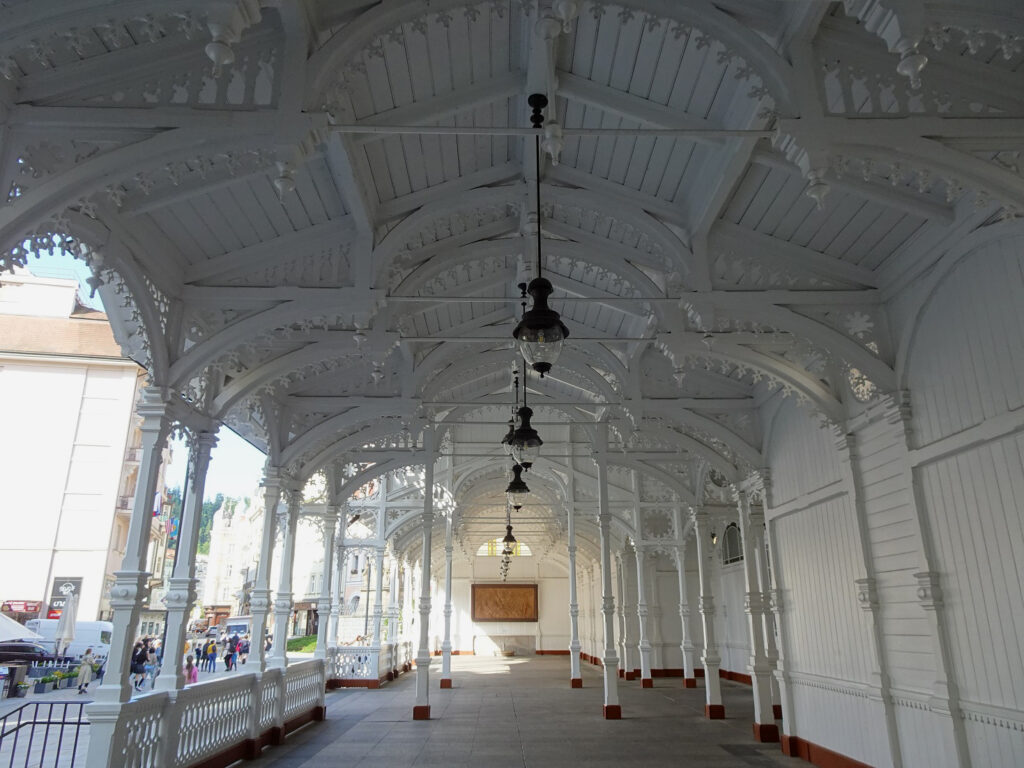
This colonnade covers a few more hot springs, including the Charles IV Spring – supposedly the first one discovered in the area, back in the 14th century. The nearby relief depicts the hunt during which the king is said to have stumbled across the spring. Once again, it can get quite crowded later in the day, so come here early to have the colonnade to yourself.
Hot Spring Colonnade (Vřídelní Kolonáda)
This one is a bit divisive. Built in the 1970s in a brutalist concrete style, the Hot Spring Colonnade definitely doesn’t have the charm of the other three. But it does house the town’s most famous spring – the Vřídlo, or “Hot Spring” – which shoots a jet of water up to 12 meters high inside a misty glass pavilion, which we found quite impressive.
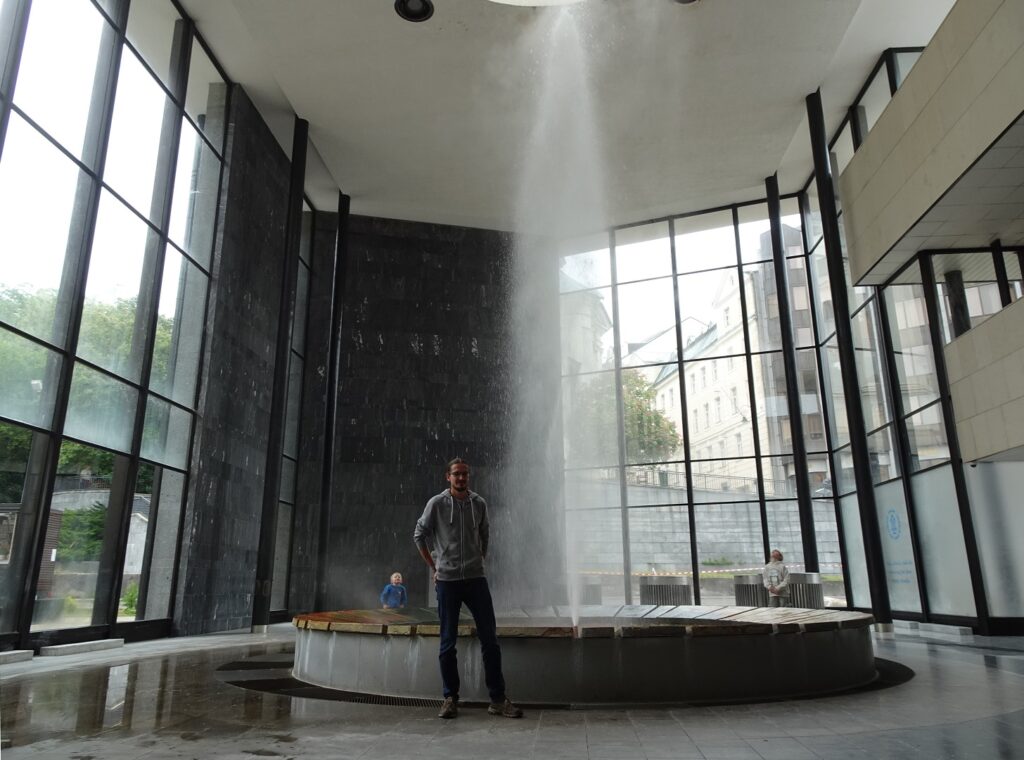
Beneath the building, you can take a guided tour into the steaming, mineral-coated underground chambers, which I highly recommend. If you want to do that, it’s a good idea to make a reservation as early as possible, as the tours fill up fast.
This is the only colonnade with opening times, which you can check here. That said, even if you visit outside these times, you can spot the fountain through the glass walls of the building.
Castle Tower and UNESCO Info Centre
Tucked just above the Market Colonnade, this squat, medieval tower is one of the oldest structures in town. Built during the reign of King Charles IV – the same guy who supposedly discovered the springs – the tower now houses Karlovy Vary’s UNESCO Visitor Centre.
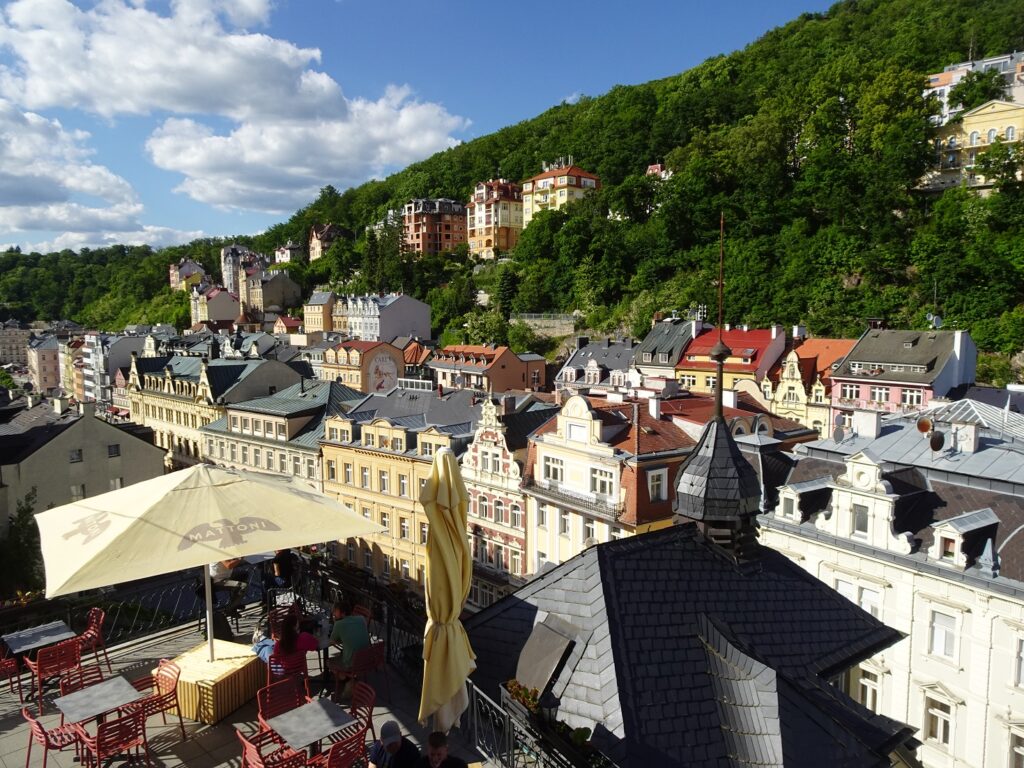
The exhibition is just one room, but there’s some cool info about why the town’s hot springs and spa culture earned it a place on the World Heritage list. There’s also information on the other 10 Spa Towns included in the UNESCO property.
We also liked the view from the small terrace, and there’s a nice little café on the ground floor. To get to the tower, you can walk up the street past the plague column west of the market colonnade or take the elevator directly north of the market colonnade. You can check the current opening times here.
Café Elefant
The historic Café Elefant is a great place for a pit stop, with its fresh pastries and strong coffee. Inside, it has a slightly faded Habsburg charm, but we preferred sitting outside watching the river float by. The best spot for that is the balcony on the first floor.
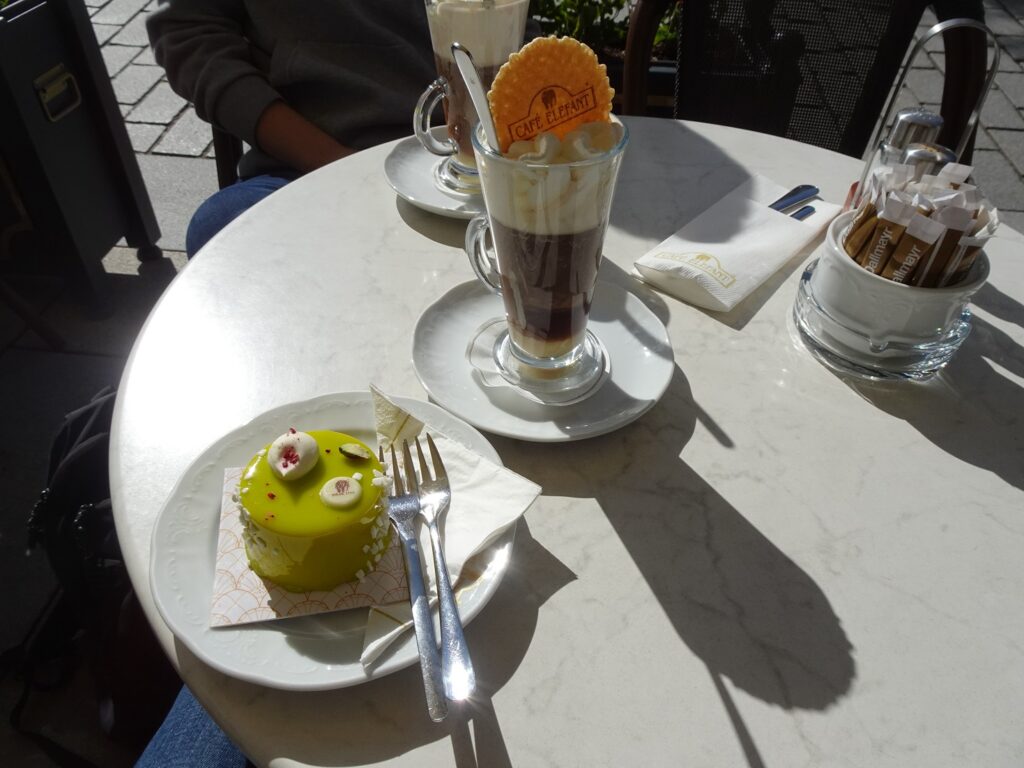
Café Elefant is located right at the foot of the colonnade district on Stará Louka Street, on the west side of the river opposite the theatre.
Karlovy Vary Museum
Now, if you’re even remotely into history – or just want to get a bit of context for all the fancy buildings and spa culture – the Karlovy Vary Regional Museum is worth a stop. Housed in a beautiful historic villa from the 19th century, we found both the historical artefacts themselves and the way they were presented top-notch.
There’s two main exhibition levels: The first floor covers the specific history of the city, including its rise as a Spa Destination as well as the famous Karlovy Vary Film Festival, which has taken place since 1946. The second floor deals with the nature, archaeology and general history of northwestern Bohemia.
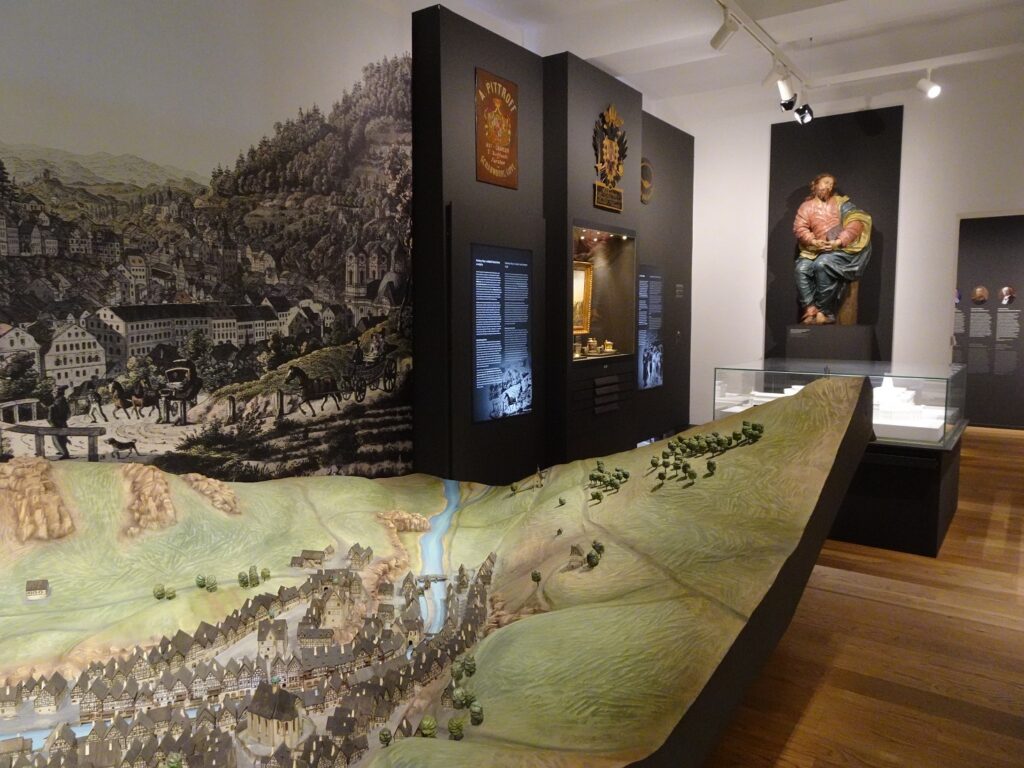
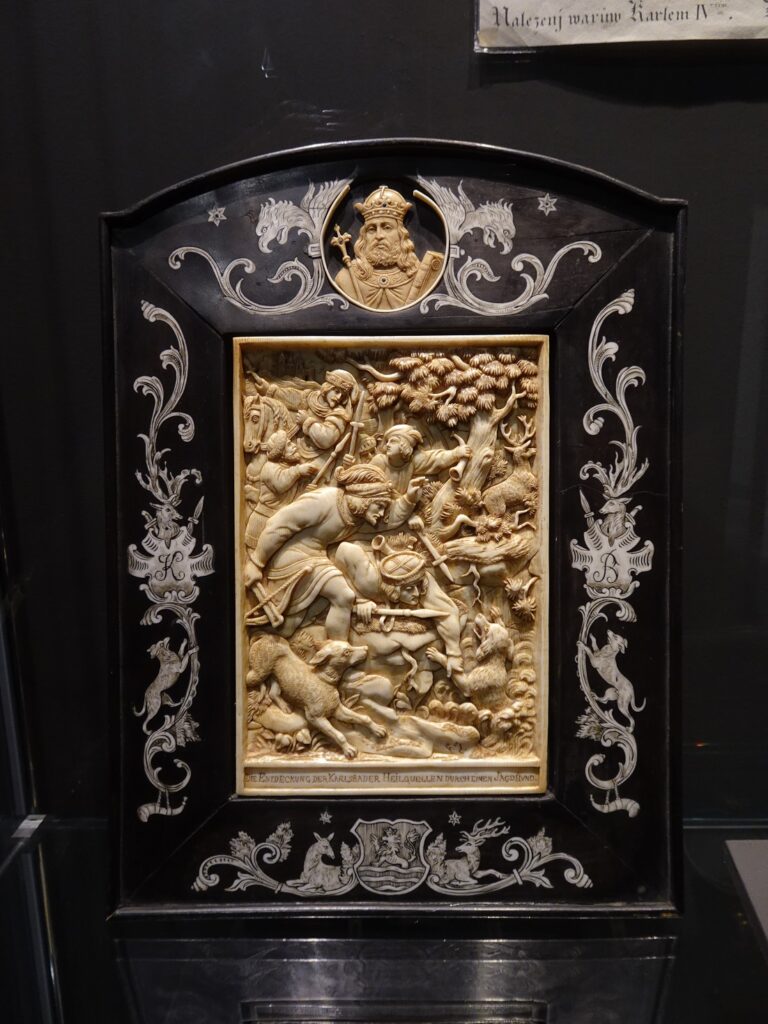
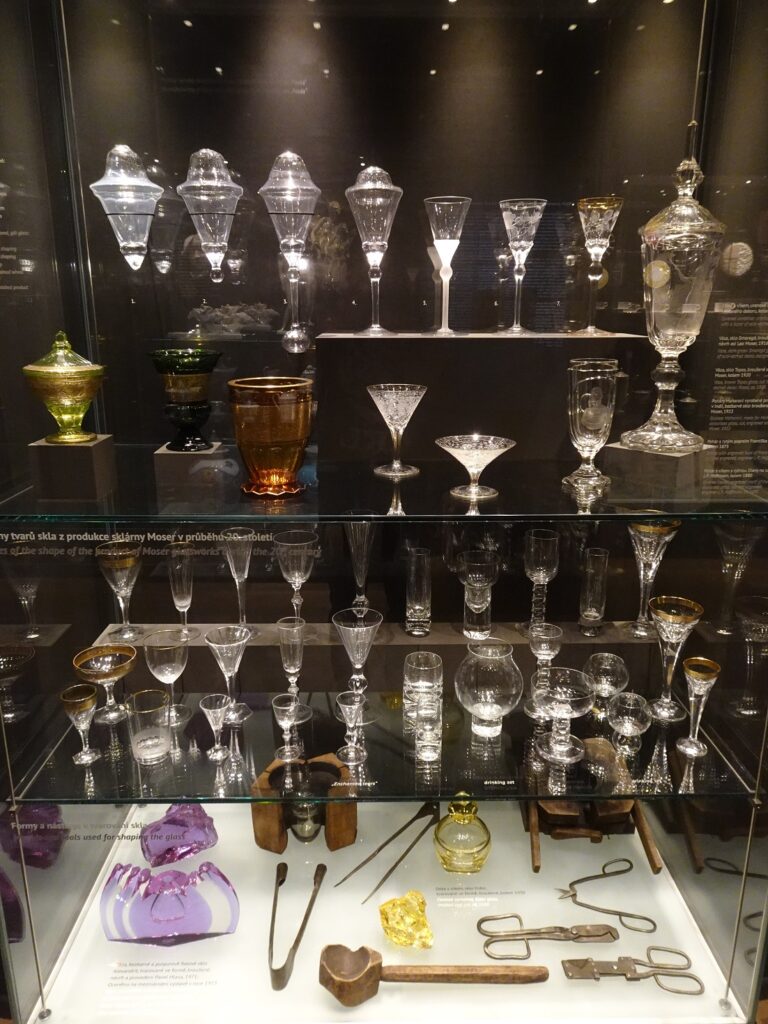
All of it is presented in an engaging, often hands-on way, which made the museum fun to explore. The museum is about 5 minutes south of the Hot Spring Colonnade, past the beautiful theatre building on the east side of the Teplá River. You can check the current opening times on their website.
The Imperial Spa (Císařské Lázně)
If you’ve ever wondered what luxury spa culture looked like 150 years ago, the Imperial Baths will give you a good idea. This grand Neo-Renaissance building used to be the height of 19th-century wellness – a place where European aristocracy came to bathe, be pampered, and show off a bit.
Since then, it has been restored and repurposed into a cultural and exhibition space, so while you can’t take a dip here anymore, you at least walk through and admire the architecture. The ground floor holds an interactive exhibition on spa culture and some famous visitors, from Franz Kafka to Juri Gagarin.
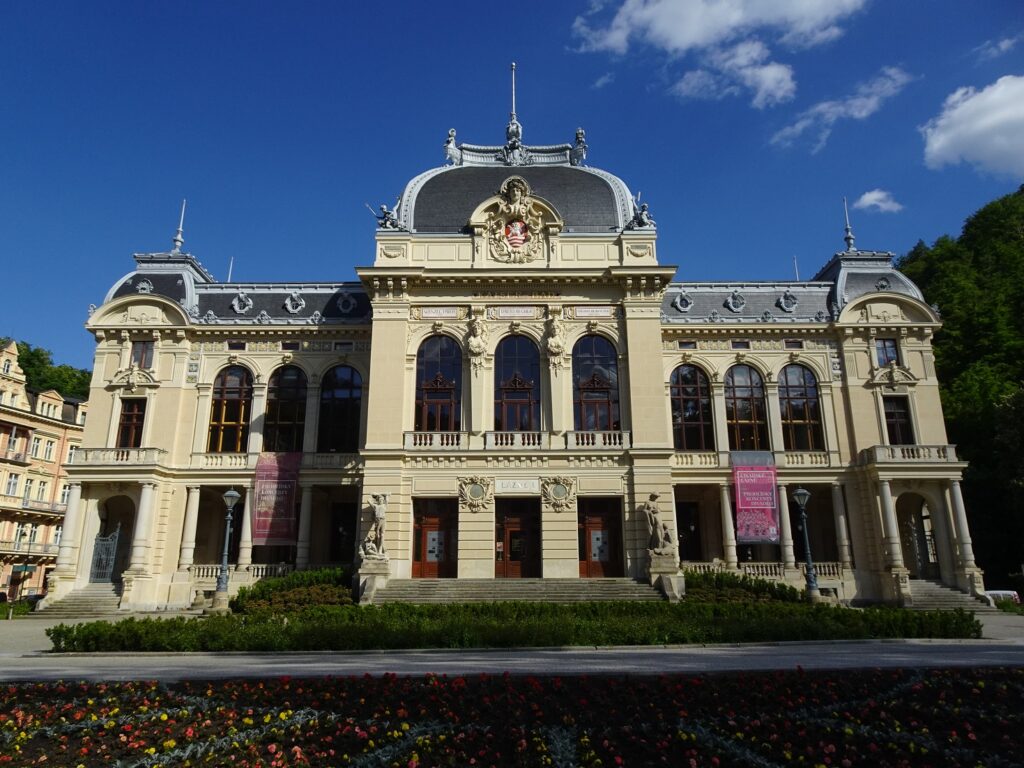
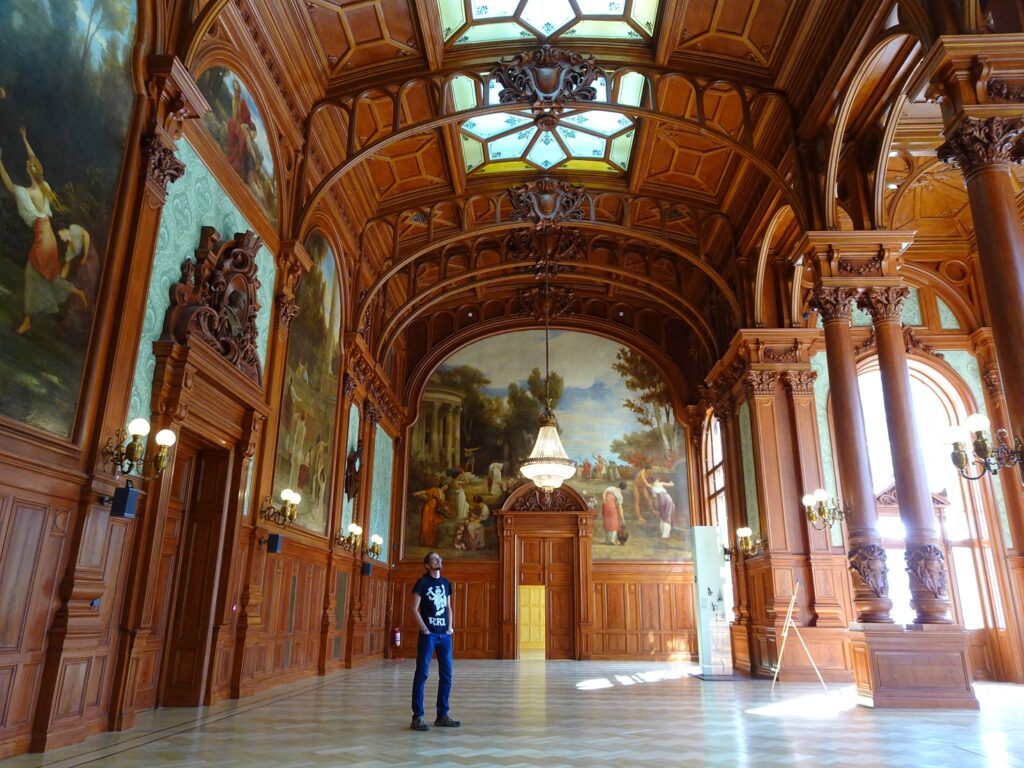
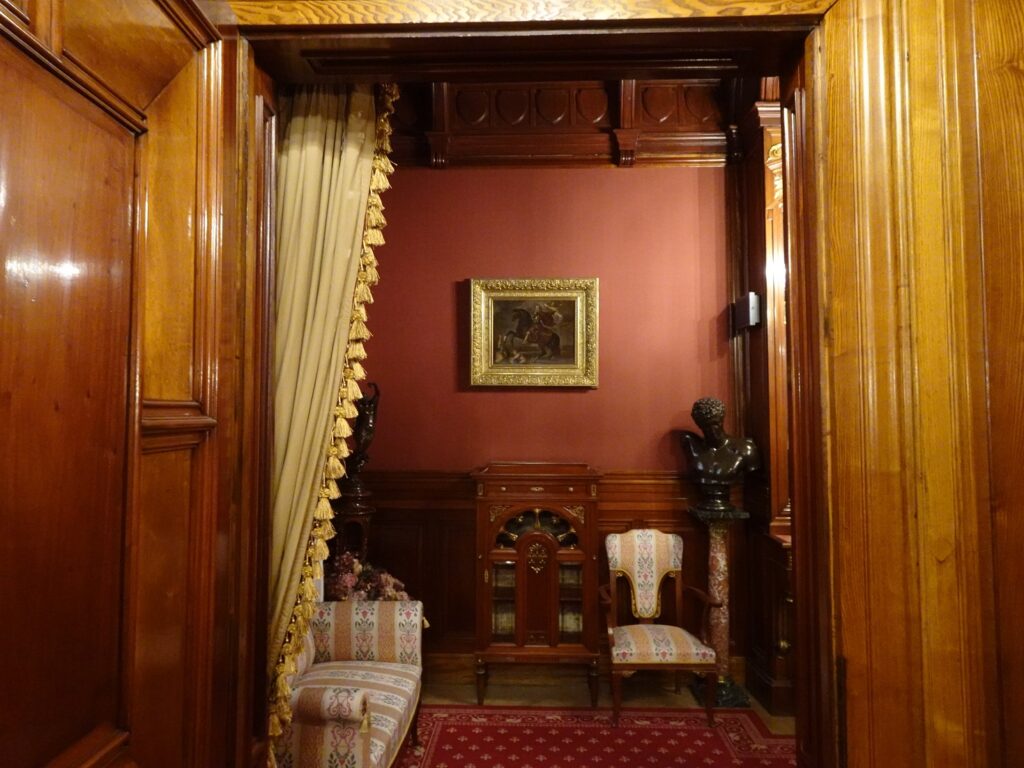
In the upper levels, you’ll find some grand historic rooms – our favourite was the impressive Zander Hall, with its carved wooden pillars and allegoric fresco paintings. This hall is also where scenes from the eponymous Casino were filmed in James Bond – Casino Royale.
The entrance to the main building is included in the Karlovy Vary Card, but there’s also a small area with the actual private bath constructed for Emperor Franz Joseph I. It was somewhat interesting, but unless the entrance is free (like it was when we visited on a Friday) I wouldn’t say its worth paying the extra entrance fee.
Karlovy Vary Art Gallery
A little further east on the other side of the Teplá River sits a low white building housing Karlovy Vary Art Gallery. The museum displays mainly modern Czech paintings and sculptures and has both a permanent exhibition and regularly changing temporary exhibitions.
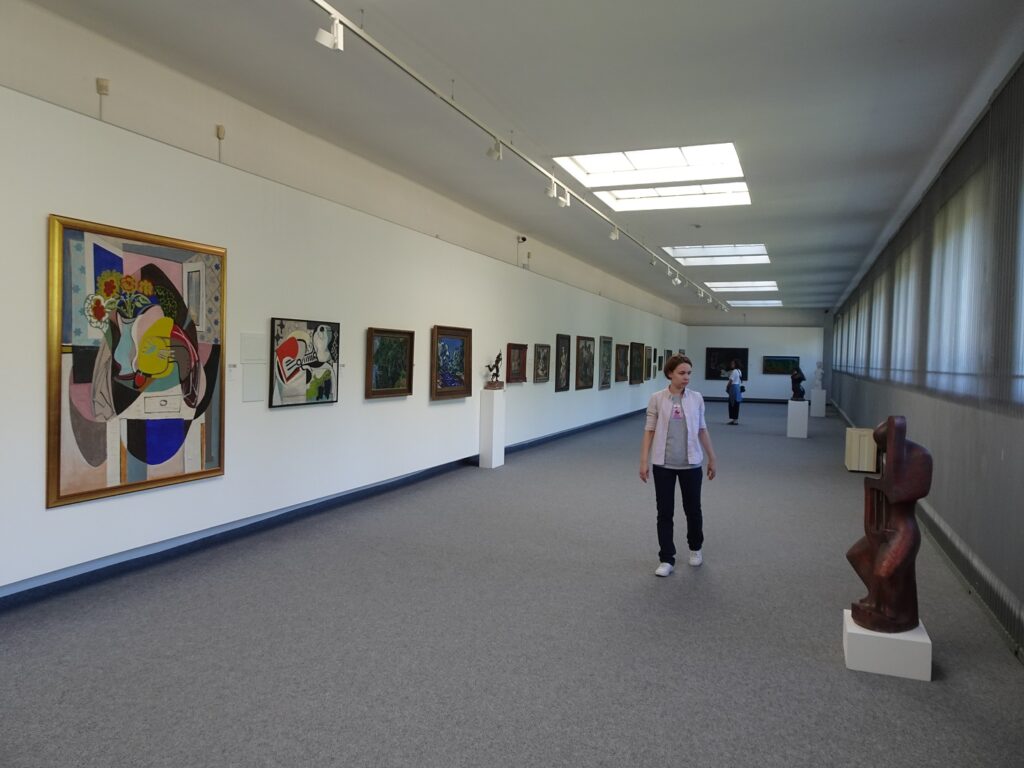
Once again, we checked it out because it was included in our Karlovy Vary Card, and were glad that we did, as we might have skipped it otherwise. You can check the current opening times here.
Charles IV. Lookout Tower and Dinner
If you’ve still got some energy left, you can continue a little further east, where there is a small park with a monument to Beethoven and a tiny Japanese Zen Garden. We also liked the 30 minute walk up the wooded hill above the museum to the pseudo-gothic Charles IV. Lookout Tower (Vyhlídka Karla IV.), from where you have a great view over the city.
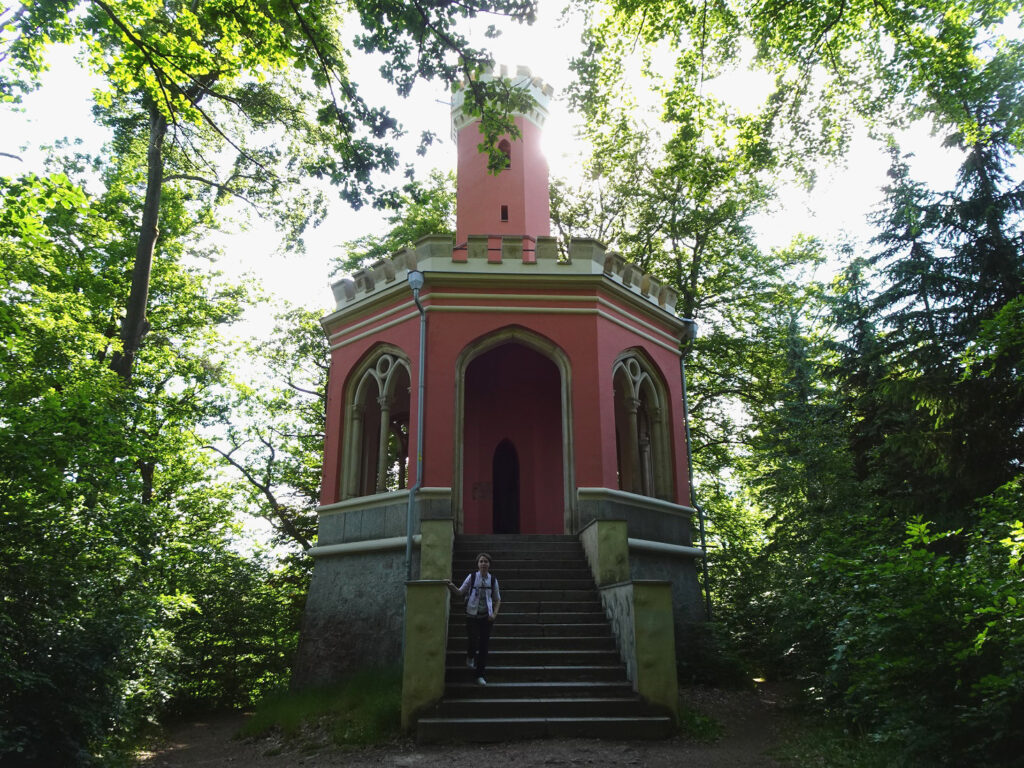
Otherwise, you can directly make your way back to the spa part of town to get some well-deserved dinner. We really liked the cozy, subterannean Restaurant U Křížovníků near the church of St. Mary Magdalene.
Day 2
Church of St. Mary Magdalene Catacombs
Beneath the elegant streets of the city’s Spa Quarter lies an underground world, and you can explore parts of it by taking tours through the rooms and tunnels below the Hot Spring Colonnade and the nearby Church of St. Mary Magdalene.
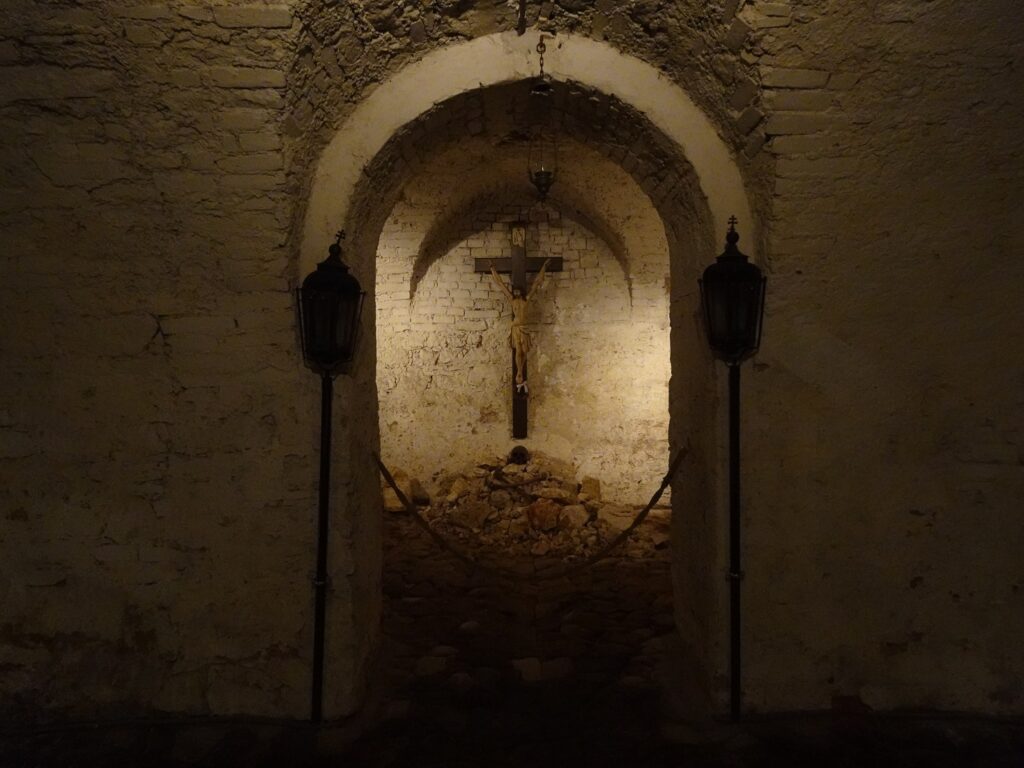
The gloomy, bone-filled Catacombs of the latter form an interesting contrast to the bright pastel-coloured baroque era church above. The crypt houses remains from a former Gothic church that stood here before the current one was built in the 1700s and there are some eerie crucifixion scenes surrounded by piles of skulls, which I thought were pretty neat.
You can only visit the catacombs by guided tour, which you can book on the first floor of the Hot Spring Colonnade or by mail (exkurze[at]splzak.com). It’s a good idea to book a day or so in advance, as the slots fill up fast. The tours are in Czech only, but we got an English leaflet explaining the history and architecture of the place. You can check the opening times here.
Hot Spring Underground Tour
Just across the square sits the Hot Spring Colonnade, and once again we found the underground more interesting than what was happening above ground.
The guided tour of the underground spring system explains how the town’s hottest spring works and how they deal with the super-fast build up of minerals that crust everything down here in otherworldly orange and white formations.
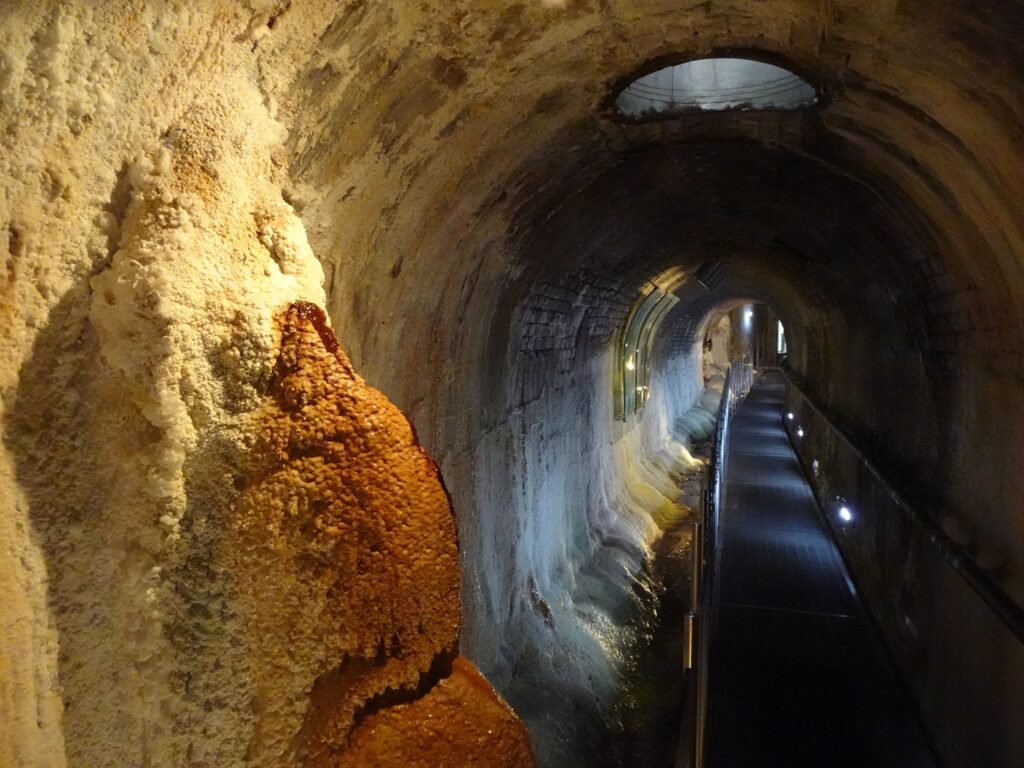
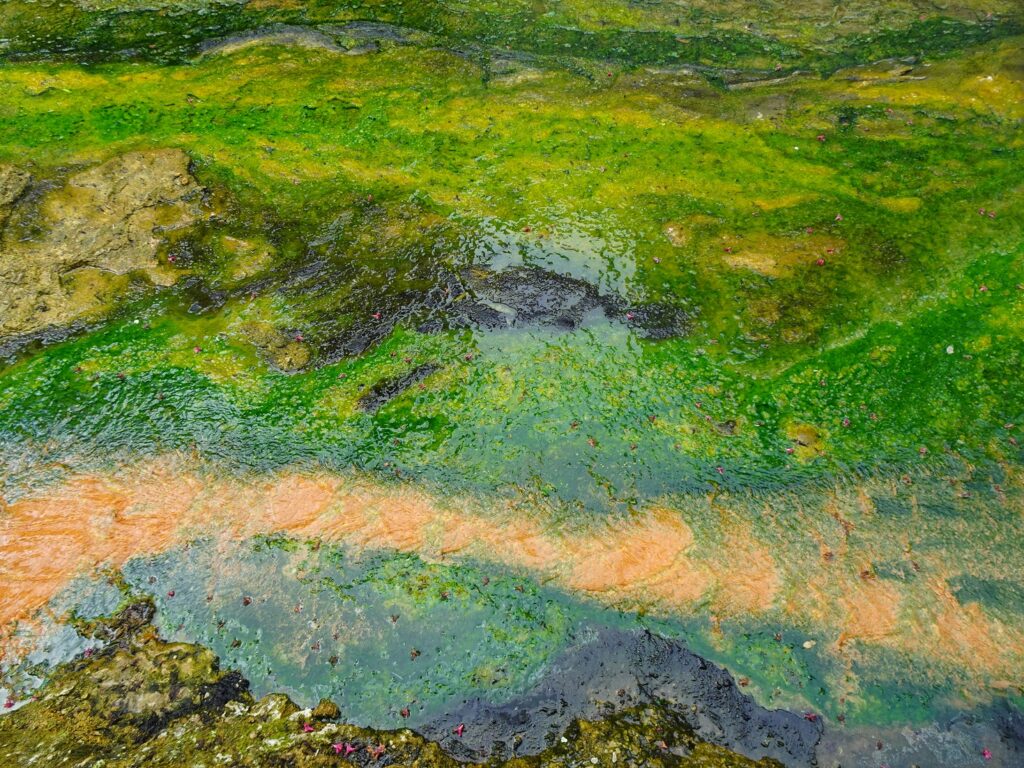
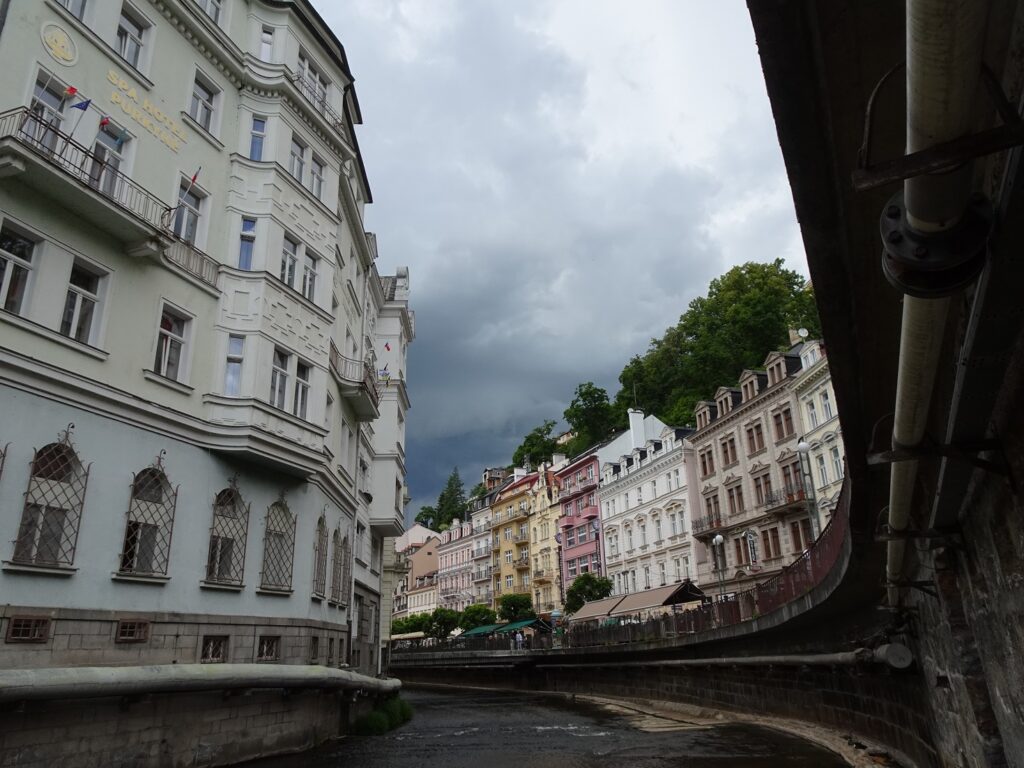
The main part of the tour leads through the underground tunnels, which end up near the Teplá, where you can see two tiny bubbling springs releasing hot underground water into the river.
For me, one of the more interesting sights were the shelves where the famous stone rose souvenirs are being prepared by drenching paper roses with the mineral-rich water, until they’re covered in calcite.
Once again, you can only visit the underground by guided tour, which should be booked on the first floor of the Hot Spring Colonnade or by mail (exkurze[at]splzak.com) at least a day in advance. There are both Czech and English-language tours available. You can check the times here.
The Funicular to the Diana Lookout
Once you’re back above ground, it’s time for a change of pace and altitude. Just past the Grandhotel Pupp, the funicular station waits at the foot of the forested hill. This is the easiest way up to the Diana Tower, although you could also hike up there, if you’re in the mood.
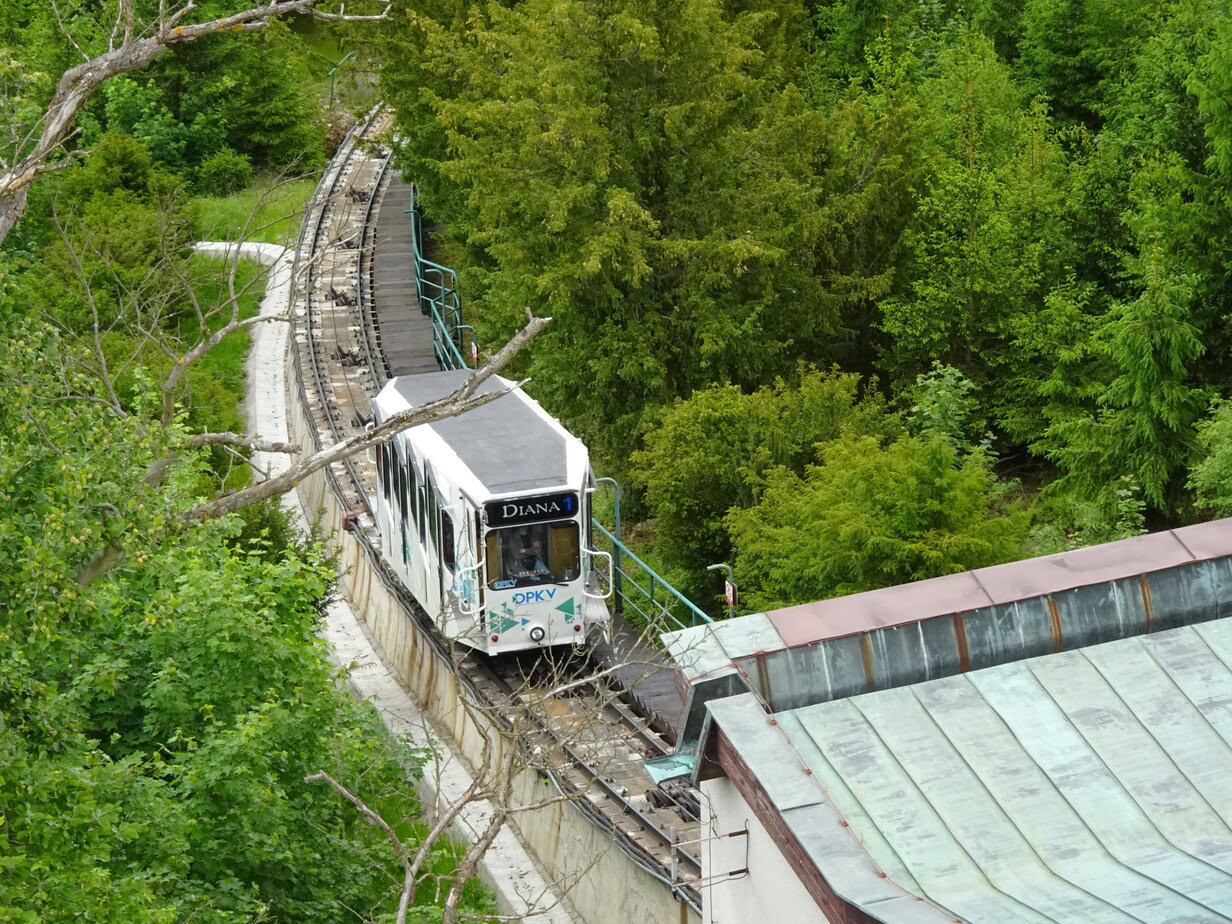
Trains run up the hill every 15 minutes from 9am to 5pm year-round, with a few later services during the summer. You can check the current times and prices here.
Diana Lookout Tower and Deer Jump Lookout
At the top of the hill, you’ll find the Diana Lookout Tower. While it can get quite crowded, it’s worth making your way up the narrow spiral staircase (or the tiny elevator) to the panoramic platform, which had the best view of Karlovy Vary that we came across.
On the southern side of the big restaurant a small butterfly house, which we checked out, because the entrance was included in our Karlovy Vary Card. If you don’t have one, the entrance fee would be a bit steep for what you get, in my opinion. Behind the restaurant there’s also a tiny zoo with pigs, ponies and peacocks.
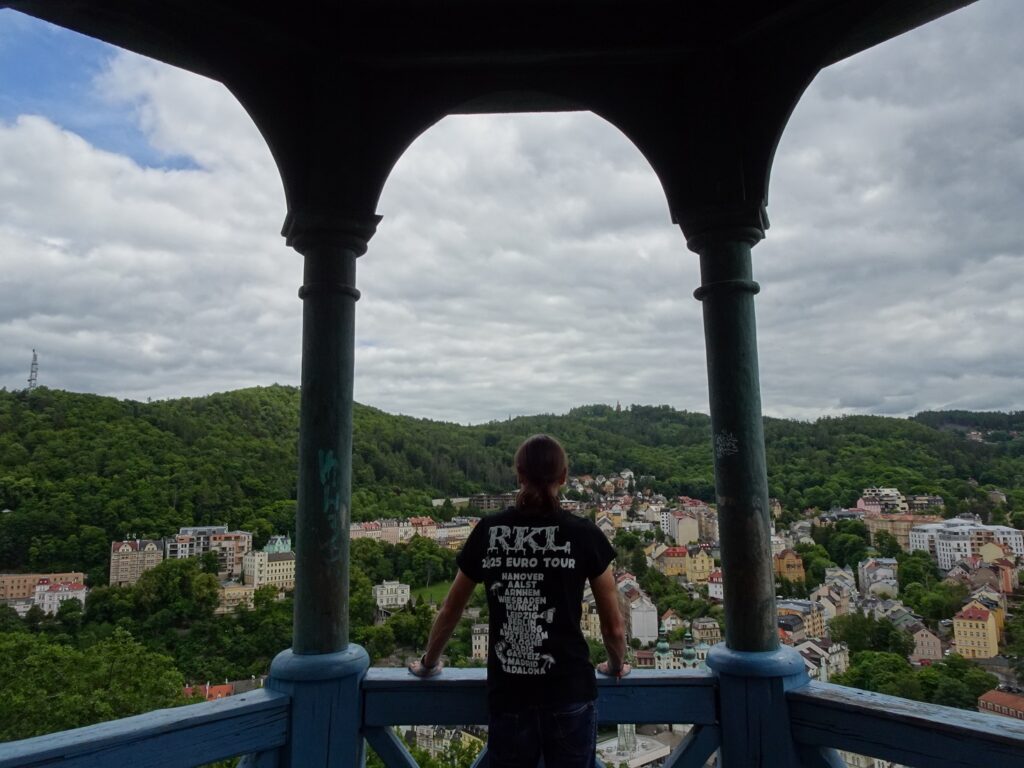
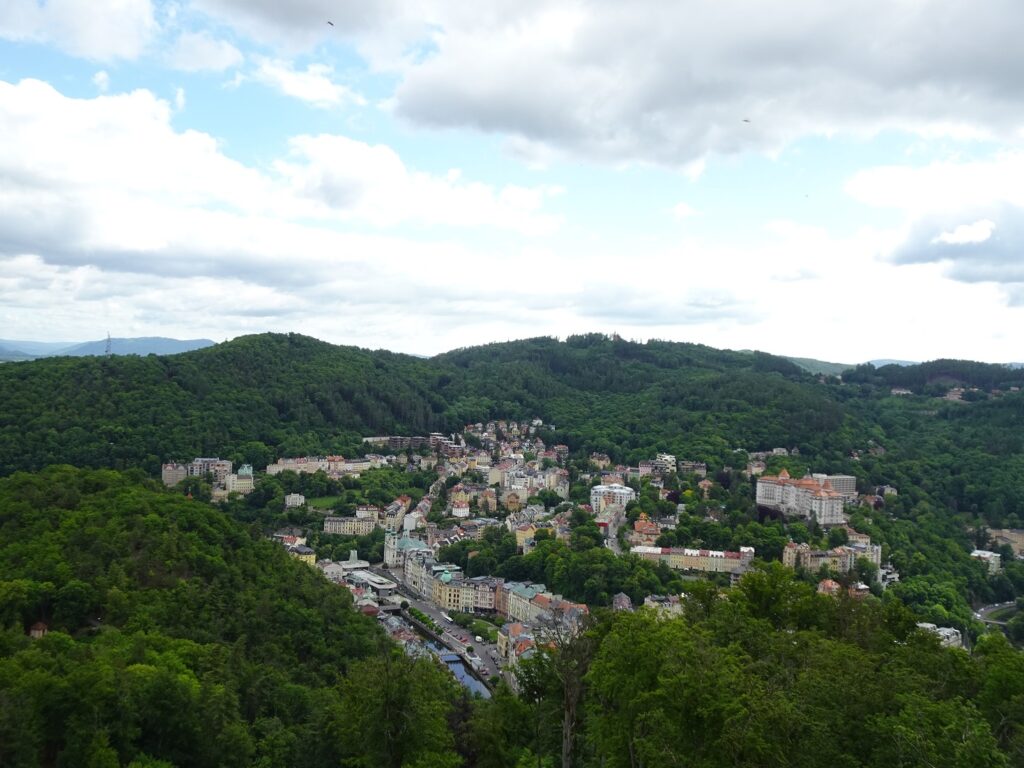
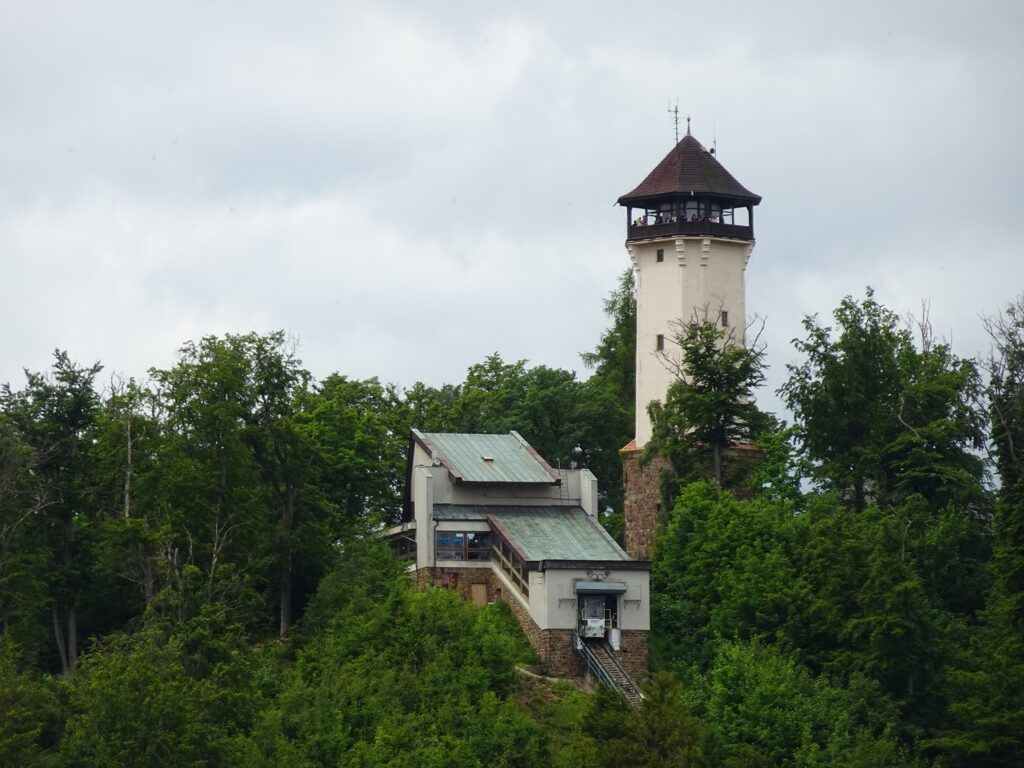
If you follow the ridge of the hills north-east after crossing the tracks of the Funicular, you’ll eventually come to the Deer Jump Lookout (Vyhlídka Jelení skok), where there’s a small pavilion with another great view over the city.
A little further on, you’ll come to the actual place known as Deer Jump, where confusingly there’s a sculpture of a chamois on a rock overlooking the valley. According to legend, this is the place where the deer chased by Karl IV. fell into the hot springs, leading to their discovery.
When the Karlovy Vary city council decided to commission a memorial statue of a deer, but kept reducing the necessary budget, a local baron decided to play a practical joke and commissioned the chamois statue instead.
Church of Saint Lucas and Church of Saints Peter and Paul
Coming down the hill, you’ll pass the Anglican Church of Saint Lucas (Kostel Sv. Lukáše), which houses a “Wax Figure Museum”. Once again, we checked it out because of the Karlovy Vary Card and otherwise I wouldn’t recommend paying for it, as a lot of the figures are dusty and in a sad state.
That said, we thought it was kind of funny to see how hilariously outdated the subjects were, with Starsky and Hutch standing next to Barry Manilow and the entire cast of Dynasty 😂.
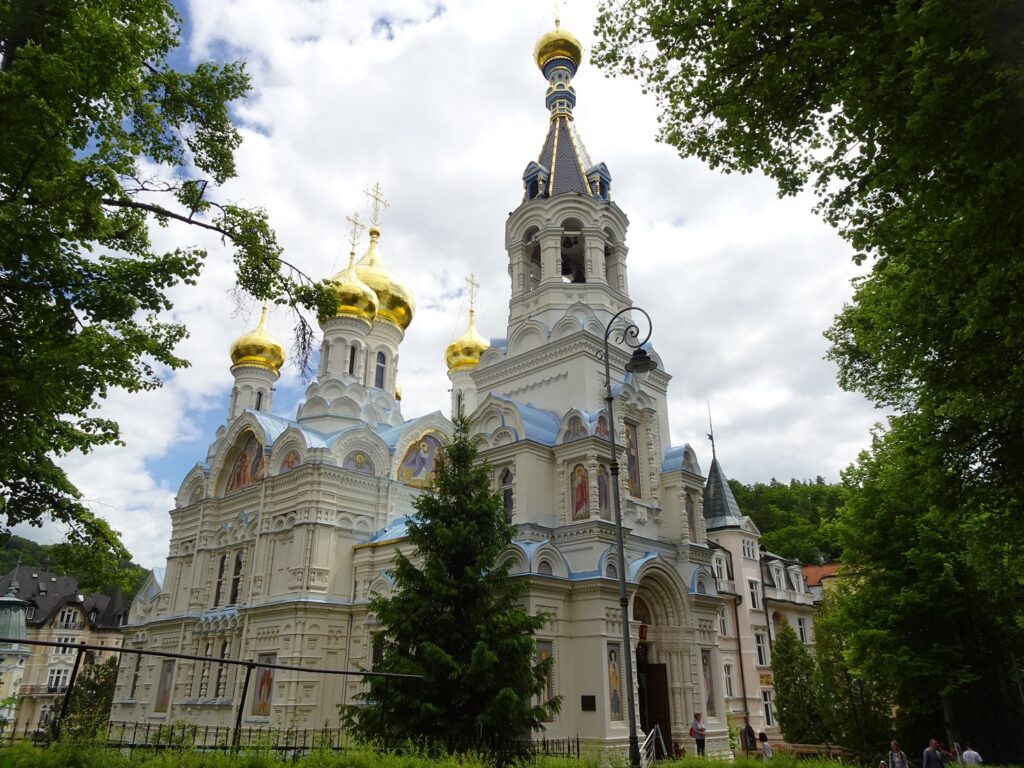
Definitely worth checking out on the other hand is the Orthodox Church of Saints Peter and Paul (Chrám Sv. Apoštolů Petra a Pavla) a little further down the hill past an imposing statue of Karl Marx.
The church was built in the late 19th century for Russian visitors who came for the spas and ended up shaping parts of the town’s culture. With its golden spires and beautiful iconostasis it reminded us a lot of the beautiful churches we had visited years ago in Russia on our Transsiberian Journey.
Villa Becher
Heading back down towards the town centre, the Villa Becher is easy to miss between all the other grand villas – but definitely worth popping into. This elegant building once belonged to the Becher family, the inventors of the famous herbal liquor Becherovka.
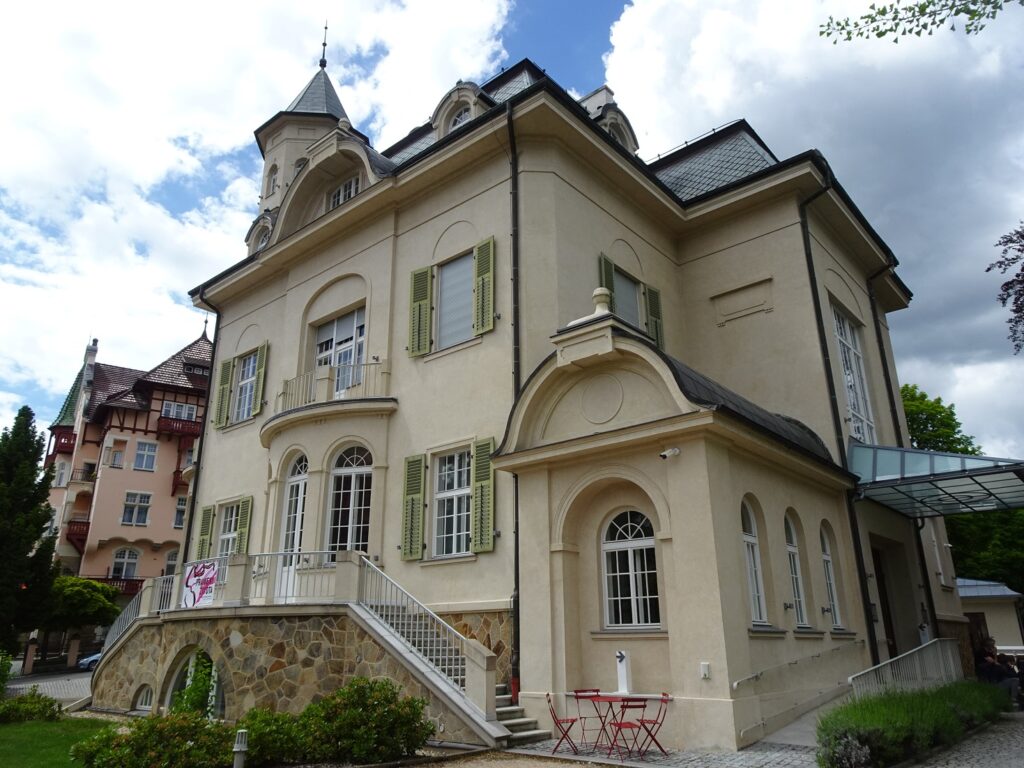
Nowadays, the villa hosts occasional exhibitions and concerts – when we were there, a small but fun exhibition featuring kinetic and video art was on. You can check the opening times here.
Try the Karlovy Vary Spa Wafers
You can’t throw a rock in Karlovy Vary without hitting someone selling the famous Spa Wafers aka. “Karlsbader Oblaten”, that have been baked in their current form since the late 1800s. They consist of two very thin wafers with a paste-like filling ranging from chocolate to apple-cinnamon. Apparently the classic version is the one featuring almonds.
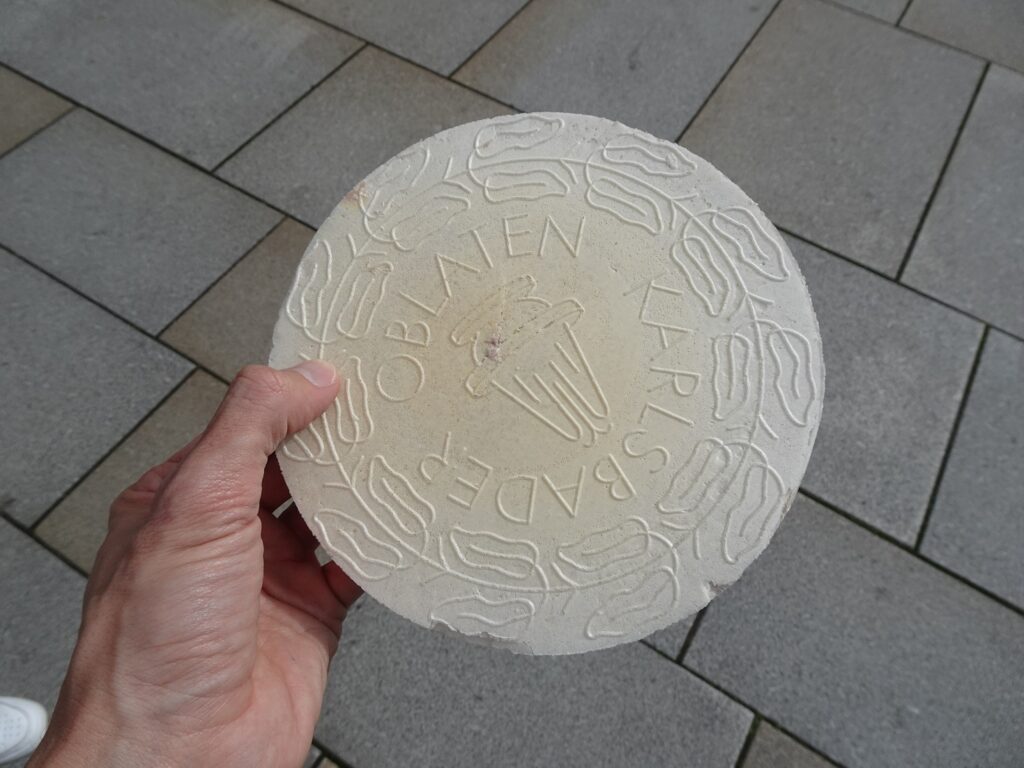
We tried them at Originál Karlovarské Oplatky near the eastern end of T. G. Masaryka Street. You can buy them fresh out of the rotating oven in the shop or pre-packed as a souvenir
Becherovka Factory Tour and Tasting
From the Villa to the factory: In the modern town centre you can visit the place where they used to produce the famous Becherovka herbal liquor since the 1800s. Again, you’ll have to take a tour to visit the place and again you should definitely pre-book it, as they are insanely popular.
Our tour started with a short film on the history of the family and the drink, then continued on through the surprisingly interactive museum featuring VR-Goggles and playable Pac-Man style games, where you have to collect the ingredients to the liquor.
The original recipe is still secret – locked in a safe and known by only two people – but during the tour we still learned about the dozens of herbs used, the storage process, and the brand’s global reach.
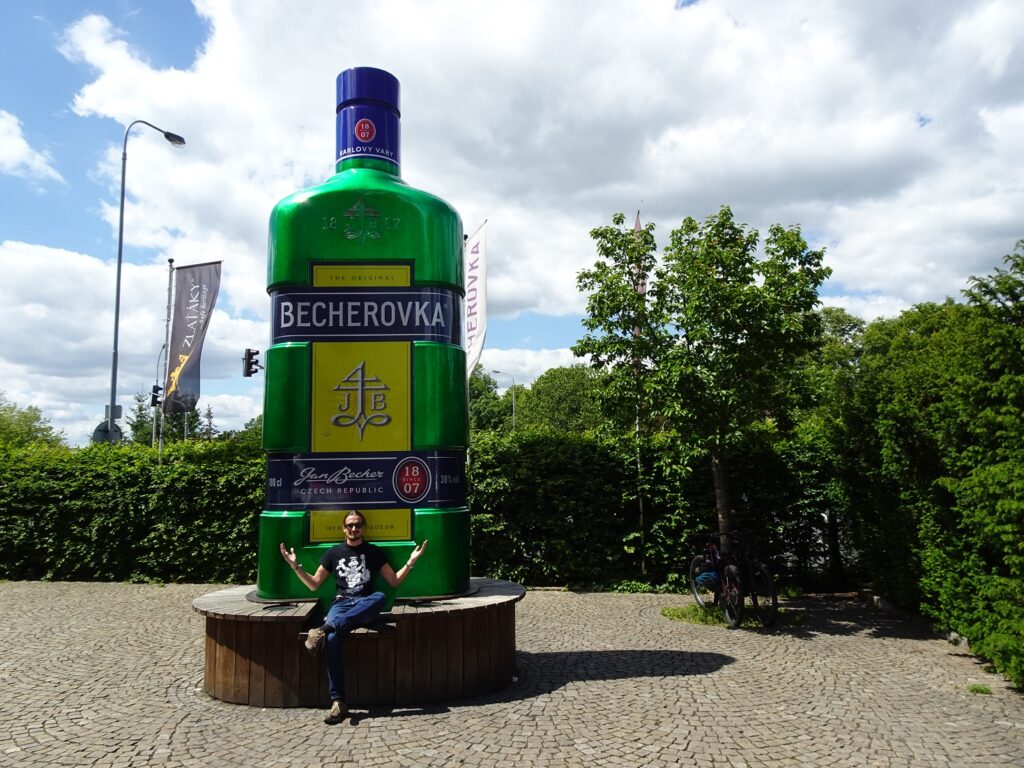
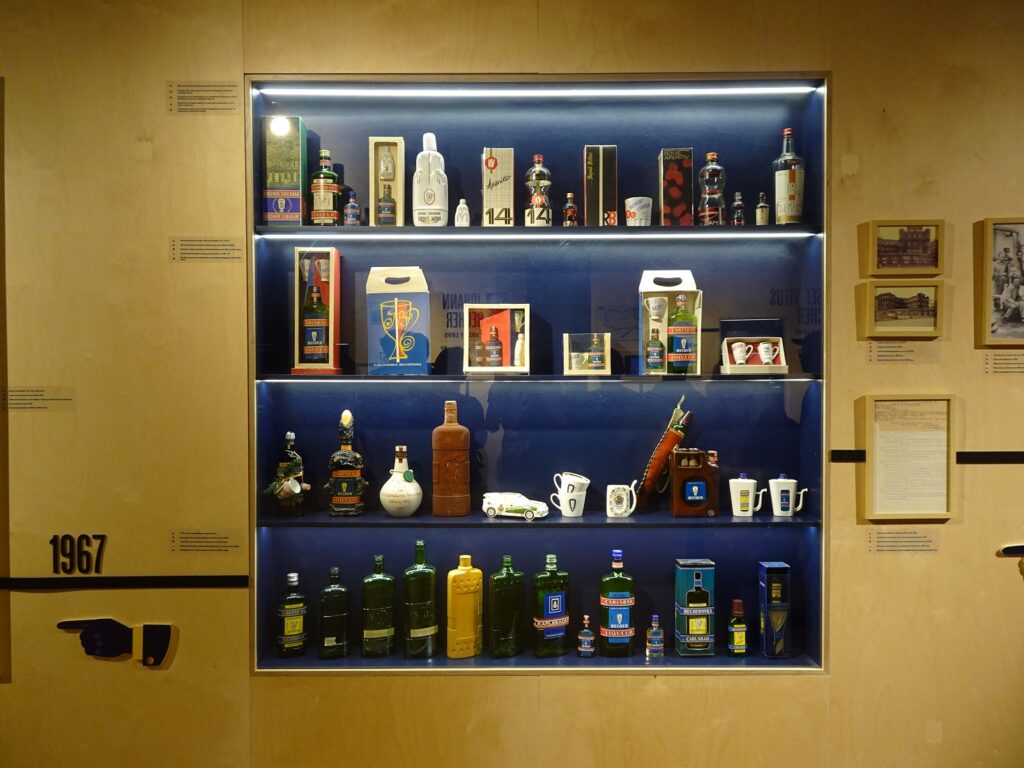
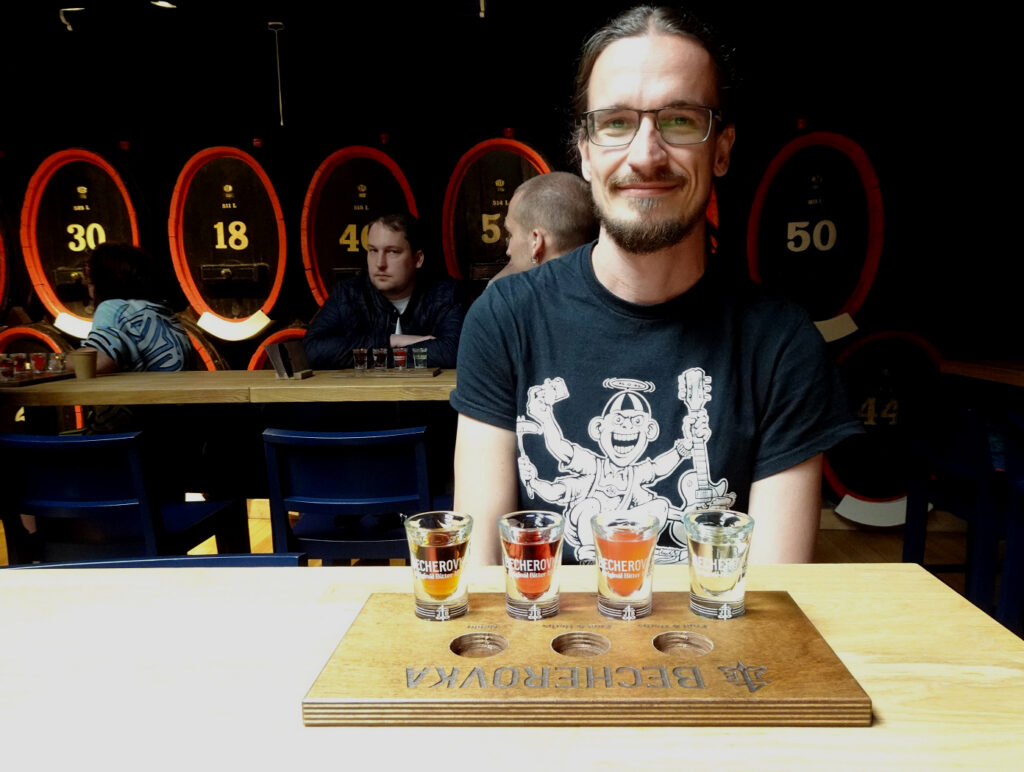
For most people in our group, the real highlight seemed to be the tasting at the end. We got samples of the classic version and three different variations, ranging from super-sweet to very strong. I still consider the bitter-sweet liquor an acquired taste, but learning about the history definitely increased my appreciation 😂.
You can check the current opening times and pre-book your tour on their website.
Dinner in the Modern City Centre
While it lacks the charm of the city’s Spa Quarter, Karlovy Vary’s workaday centre is the perfect place to go for some cheap, filling Bohemian food, like goulash with dumplings.
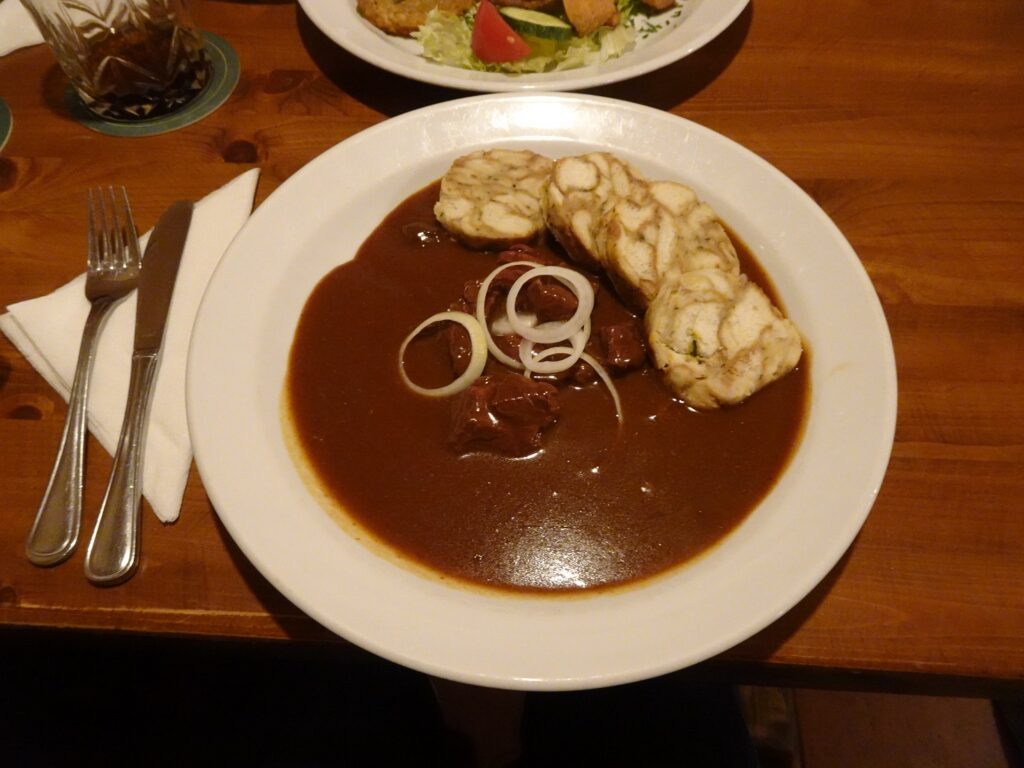
We really liked Restaurace Sklípek in Moskevská Street and Restaurance U Tomáše in Zeyerova Street.
Evening Swim at the Elisabeth Spa or Salt Cave
If you’re like us and don’t want to leave Karlovy Vary before at least trying out one of its famous baths, a swim in the Elisabeth Spa (Alžbětiny Lázně) is also included in the Karlovy Vary Card.
That said, we thought the bath was nothing special – just your run-off-the-mill combination of swimming pool, sauna and jacuzzi (although the building is beautiful on the outside).
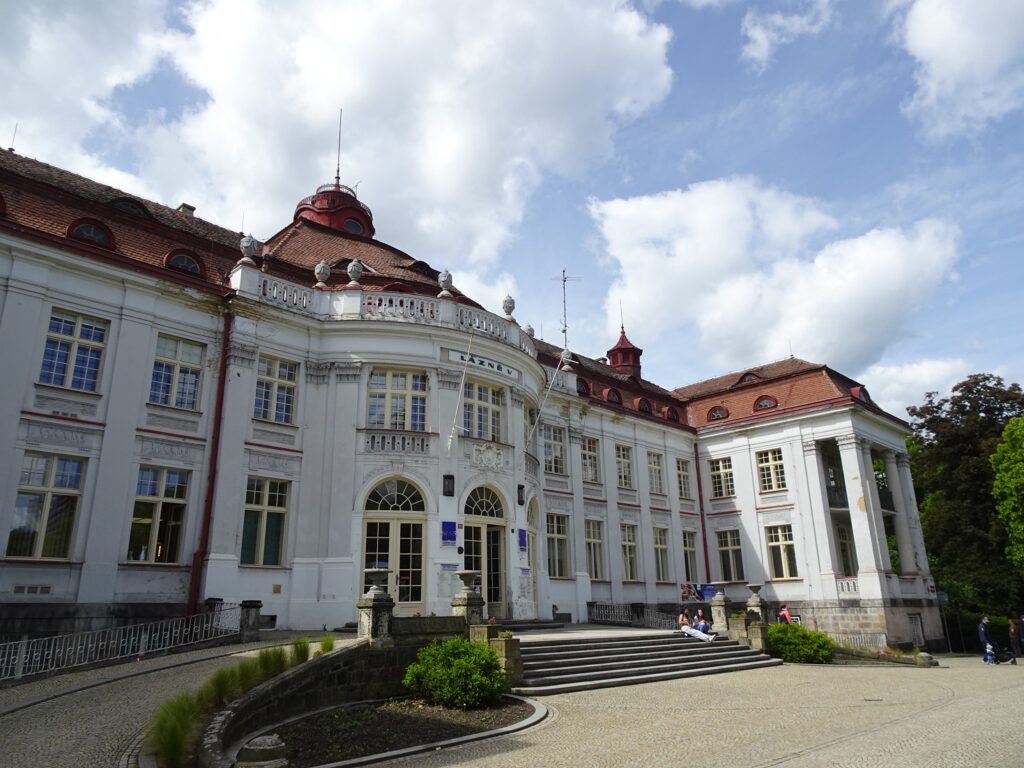
For something a little different, you can also book a slot in their underground salt-cave, whose micro-climate is apparently beneficial to both skin and respiratory tract. We mainly liked the relaxing, meditative atmosphere of the dark chamber with its soundscape of trickling water.
You can check the opening hours of the swimming pool here and the ones of the salt cave here.
Karlovy Vary Itinerary Map
All the places I mentioned in my guide can be found in this map of Karlovy Vary. I’ve used different colours for the different days of the itinerary.
Where to Stay in Karlovy Vary
With such a long history of tourism, there are plenty of hotels for all budgets in town. There are quite a few affordable pensions, like Sunshine Pension as well as mid-range options, like Salvator Hotel.
If you’re looking for something more luxurious, Spa Hotel Imperial has very good reviews.
See Also
